All products featured are independently chosen by us. However, SoundGuys may receive a commission on orders placed through its retail links. See our ethics statement.
Best headphones and earbuds for running
December 18, 2023






Take SoundGuys’ quiz to find your best fit
No matter how much you love working out, running can be exhausting. The last thing you need is the search for running earbuds to exhaust you, too. This is why we compiled this list of the best running earbuds. Sweat resistance, a comfortable fit, and reliable connection quality are the most critical factors to look out for. Everything else is just icing on the cake. Now, lace up those shoes, slather on that deodorant, and get running.
- This list of the best earbuds for running was updated on December 18, 2023, to add the Jabra Elite 8 Active to our Top Picks.
- For more options, be sure to check out our list of the best bone-conduction headphones and the best wireless neckband earbuds.
Why are the Jabra Elite 8 Active the best pair of running earbuds?
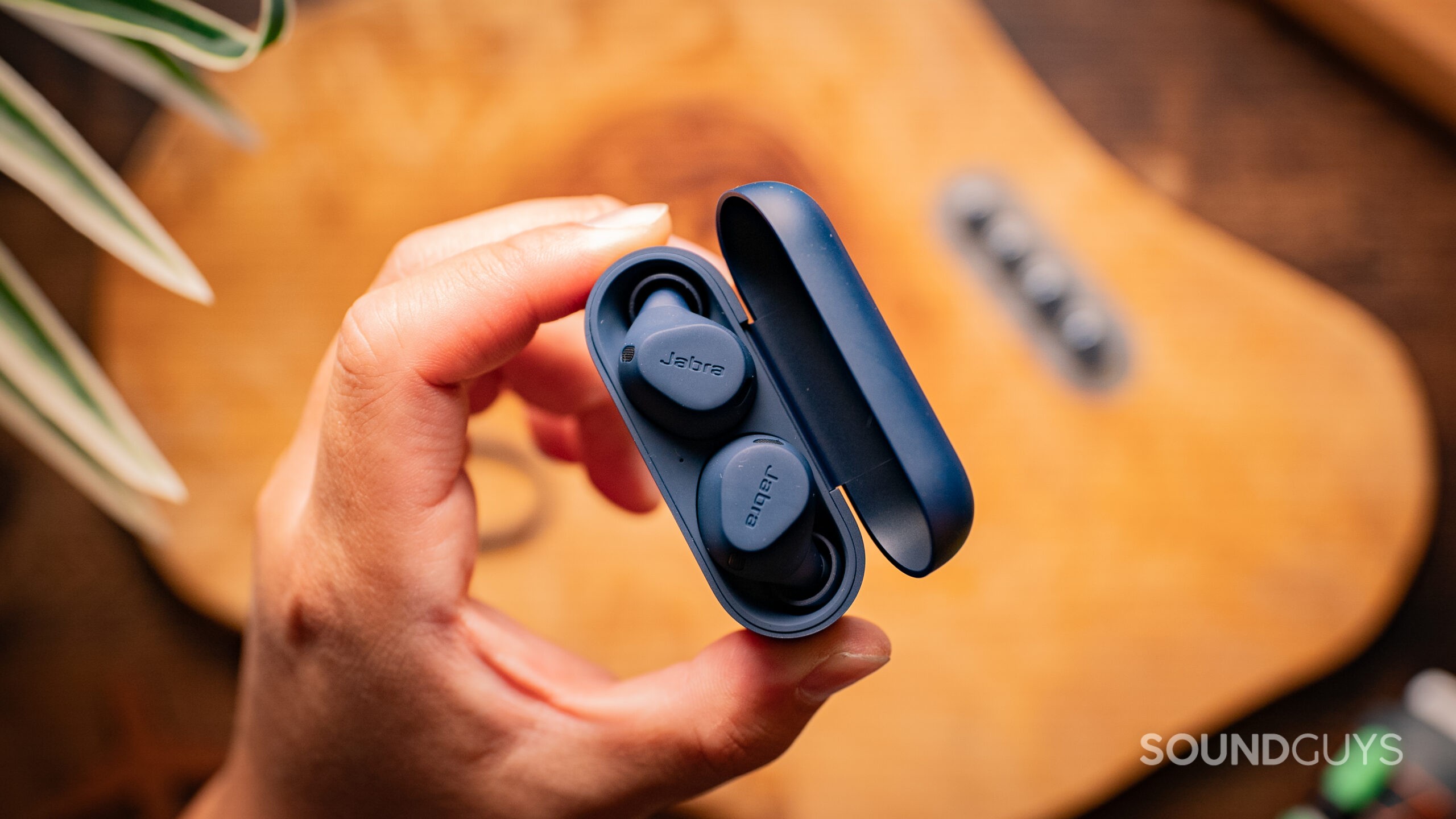
The Jabra Elite 8 Active earbuds emerge as the latest benchmark for runners and fitness enthusiasts, offering a blend of durability, comfort, and high-quality sound. With an IP68 rating, these earbuds assure complete dust and water resistance, making them suitable for all weather conditions and rigorous workouts. The earbuds are uniquely designed for a secure fit, featuring a ShakeGrip coating that ensures they stay in place during intense activities. This design choice, combined with a selection of ear tip sizes, guarantees both stability and comfort for a wide range of ear shapes.
Loading chart ...
Sound quality is a standout feature, with the Elite 8 Active closely following our house curve, delivering a balanced audio experience with a slight emphasis on bass – perfect for keeping the energy up during runs. The earbuds also excel in battery performance, offering over 9 hours of playtime with ANC enabled, significantly outperforming their predecessor. Additionally, the earbuds support Bluetooth 5.3, multipoint pairing, and LE Audio compatibility, providing a stable and versatile wireless connection. The inclusion of Dolby Atmos for spatial audio, along with an adjustable EQ through the Sound+ app, further enhances the listening experience.
In summary, the Jabra Elite 8 Active is an excellent choice for runners seeking a combination of top-notch durability, comfort, and sound quality. Their robust build, superior water resistance, and long battery life, coupled with effective noise cancelation and customizable sound settings, set them apart in the realm of running earbuds and headphones. The integration of advanced features like Dolby Atmos and a user-friendly control scheme makes them a compelling upgrade over Jabra’s Elite 7 Active, earning them their place as our top pick.


Best for safety: Shokz OpenRun
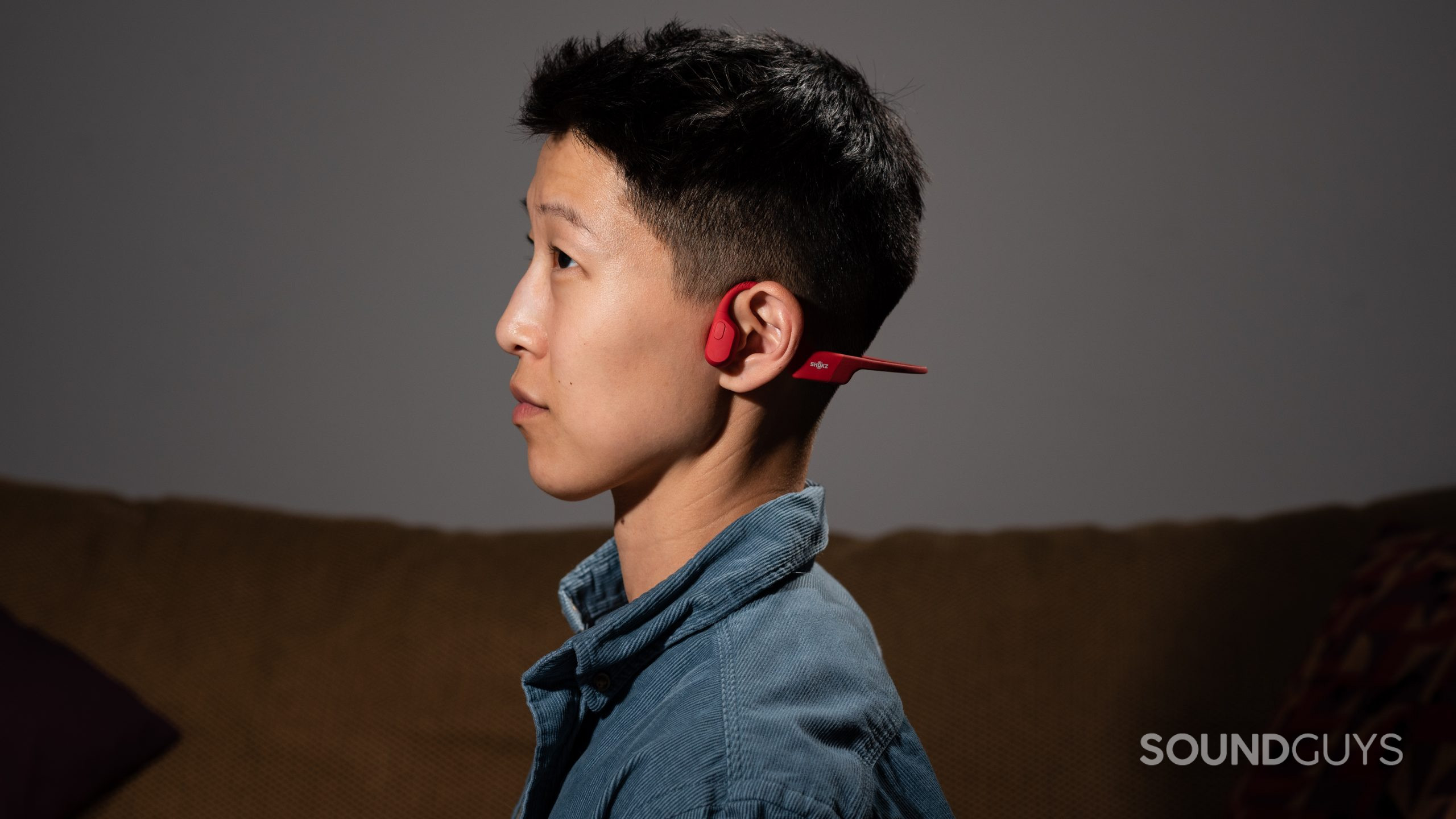
The Shokz OpenRun are our favorite bone-conduction headphones, and they’re great for runners, too. If you run outside, the OpenRunw will keep you aware of your surroundings because they don’t cover your ears at all. Instead, these running headphones sit directly on your cheekbones, sending vibrations through your skull. It sounds crazy, but the technology is hundreds of years old and perfectly safe.
These headphones have an IP67 dust- and water-resistant build. You can even stand to drop them in the pool, but make sure you fish them out within 30 minutes (and don’t let them sink below one meter).
I love using multipoint connectivity with the OpenRun, as it lets me connect to my PC and iPhone simultaneously. That way, I can sit in on work meetings while keeping an ear on any errant phone calls. The headphones connect with Bluetooth 5.1 and only support the SBC codec. The lack of high-quality codecs isn’t a big loss: since the headphones don’t seal off your ears, sound quality isn’t their strong suit to begin with.
If you want to remain fully engaged with the world and enjoy your favorite podcasts and songs, we highly recommend the OpenRun.

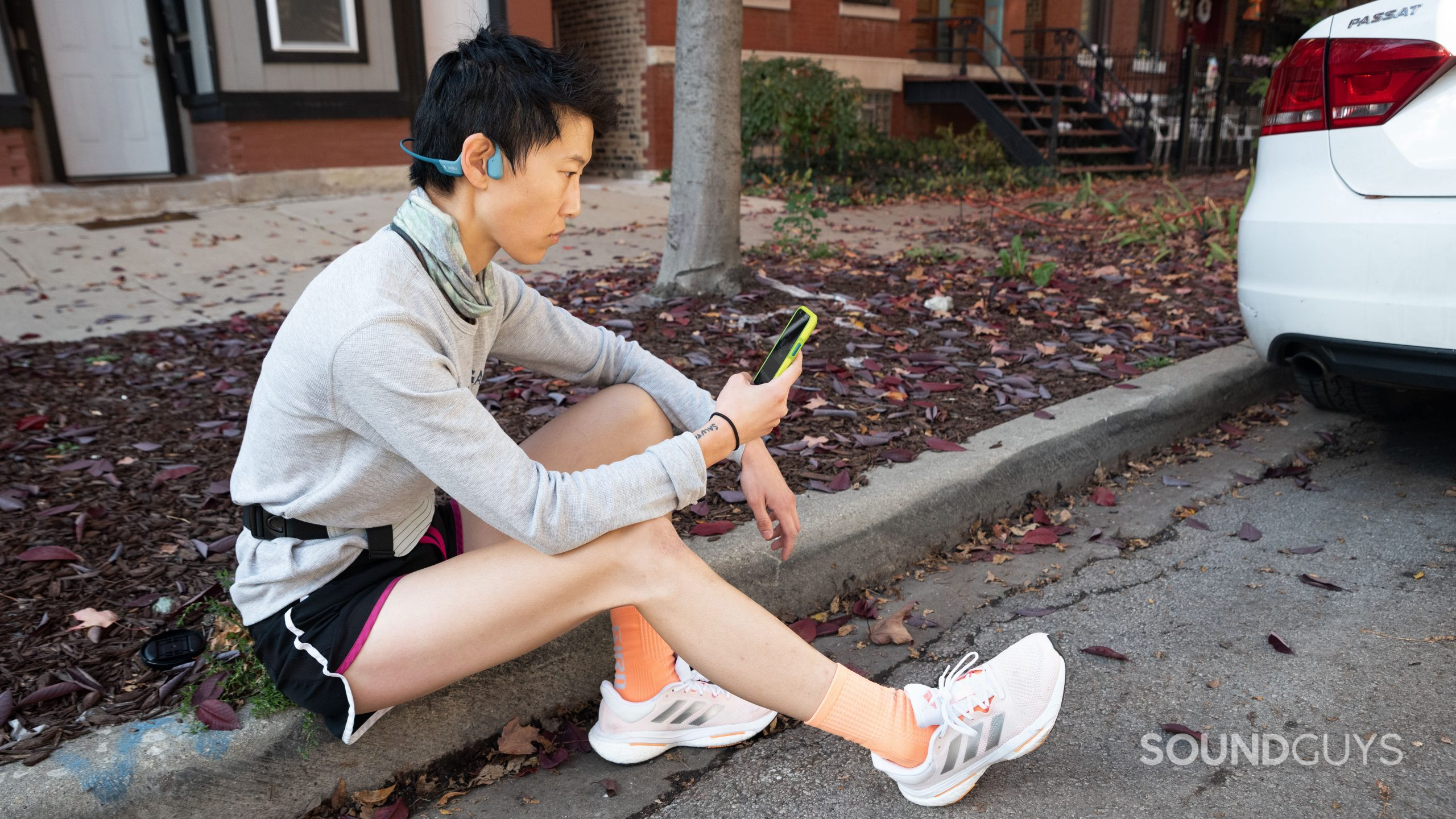
The Shokz OpenRun Pro costs about $50 more and delivers modestly better bass and battery life than the Open Run, which may make a difference if you are out for long runs. Still, the OpenRun is more durable. You get multipoint connectivity with either headset, too.

Best sound quality: Bose Sport Earbuds
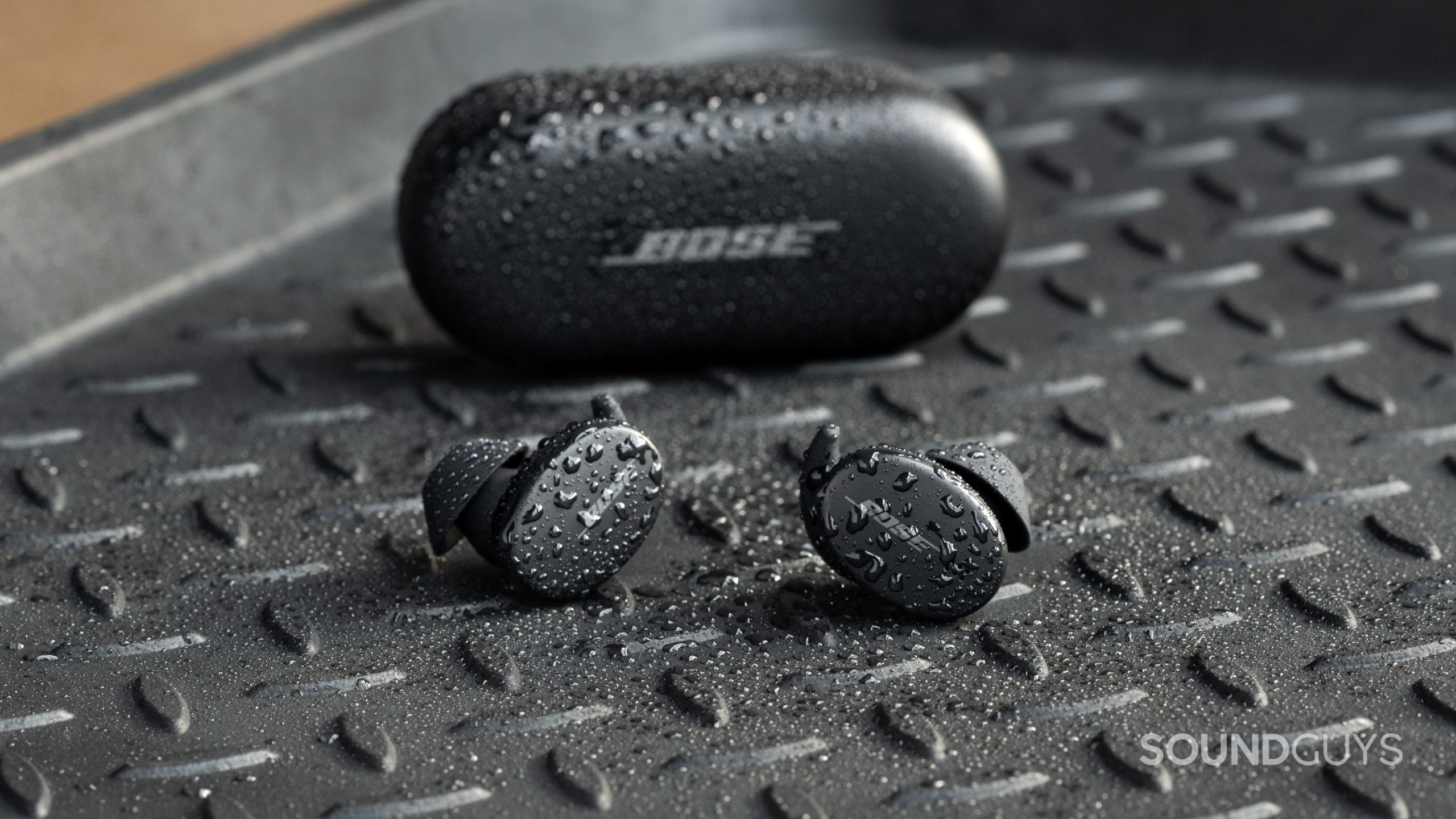
The Bose Sport Earbuds are among the best running earbuds because they’re so comfortable. Bose’s StayHear Max ear tips keep the earbuds in place and place just the right amount of pressure on your ear without causing any discomfort. Unlike the company’s debut totally wireless earbuds, the Sport Earbuds feature an official IPX4 rating.
Loading chart ...
Bose dropped the button controls of the SoundSport Free in favor of precise touch controls. You can use either earbud panel to adjust playback and volume and control incoming calls. The Bose Music app lets you adjust controls. With an update, Bose added a custom EQ to the Music app so you can adjust the sound. Bose’s Active EQ technology effectively adjusts the frequency response in real time to optimize sound quality according to background noise.
You can use the headset in mono mode, but this only works with the right earbud, which leaves out much of the hearing-impaired population. The same limitation is found with the Bose QuietComfort Earbuds. Hopefully, the company will fix this with future iterations. Auto play/pause functionality is also limited to the right earbud but works very well.

Best budget pick: JLab GO Air POP
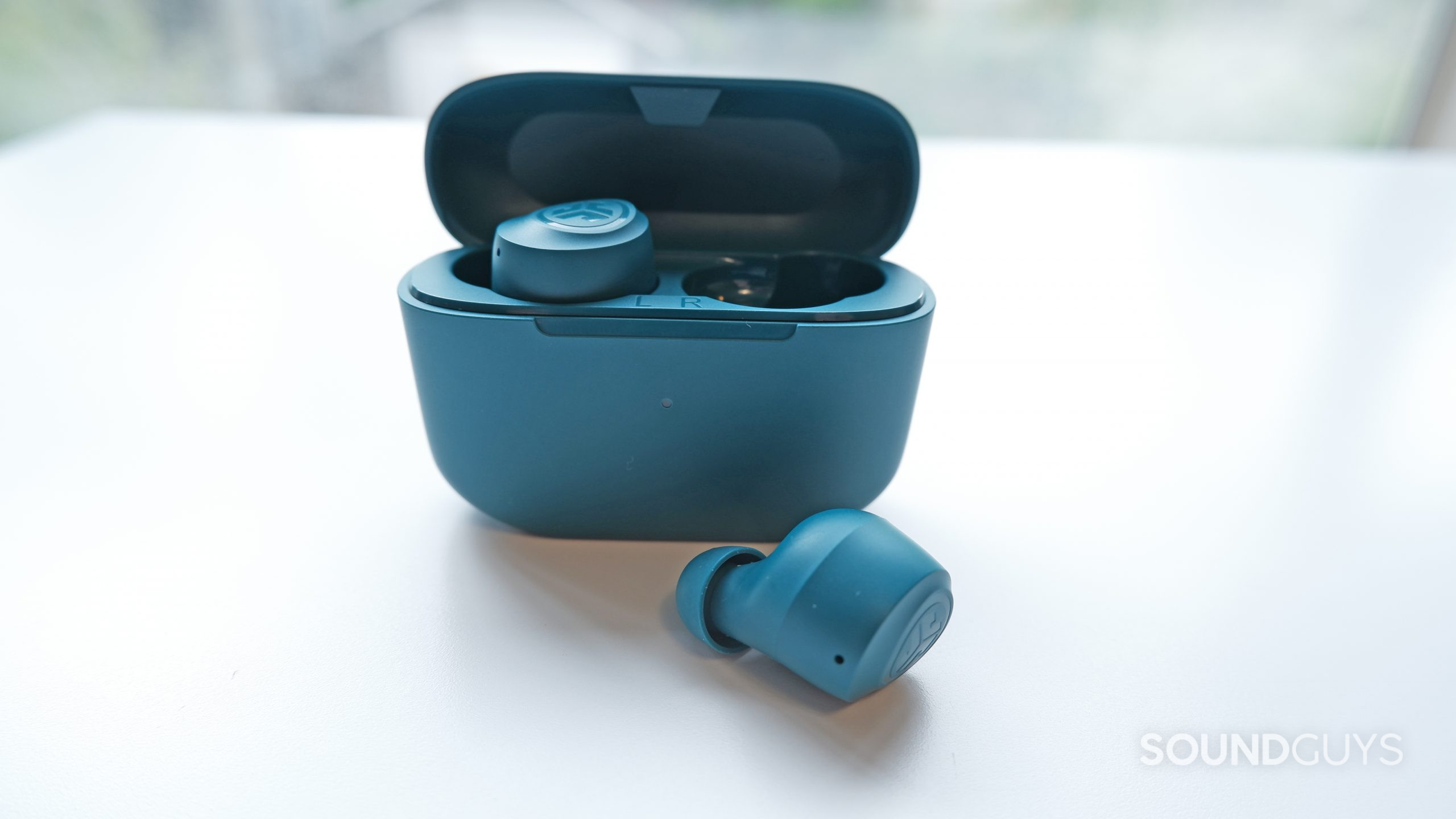
If you only have $20 to spend on workout earbuds, the JLab GO Air POP is your best bet. These come with a nifty charging case that houses an integrated USB cable. This means you no longer have to keep track of a certain charging cable, just the case. The compact earbuds fit comfortably, even if you have small ears. Despite the economical price, the GO Air POP features touch controls.
Microphone quality isn’t particularly impressive, but that’s to be expected from a pair of budget earbuds. For most athletes, durability and fit take precedence over all else, and the GO Air excels in both of these areas. The earbuds use Bluetooth 5.1 and reliably auto-connect to the last-used device. They don’t support Bluetooth multipoint, but that’s to be expected from a pair of wireless earbuds under $50.
Loading chart ...
Sound quality is surprisingly good for the price, but you may want to cycle through the onboard EQ options for louder bass. By default, bass frequencies are markedly quieter than upper-mids and treble. This is good for a fairly analytical sound, but seeing how many athletes want more oomph to their music, it may not appeal to everyone.

Best for iPhone: Beats Fit Pro
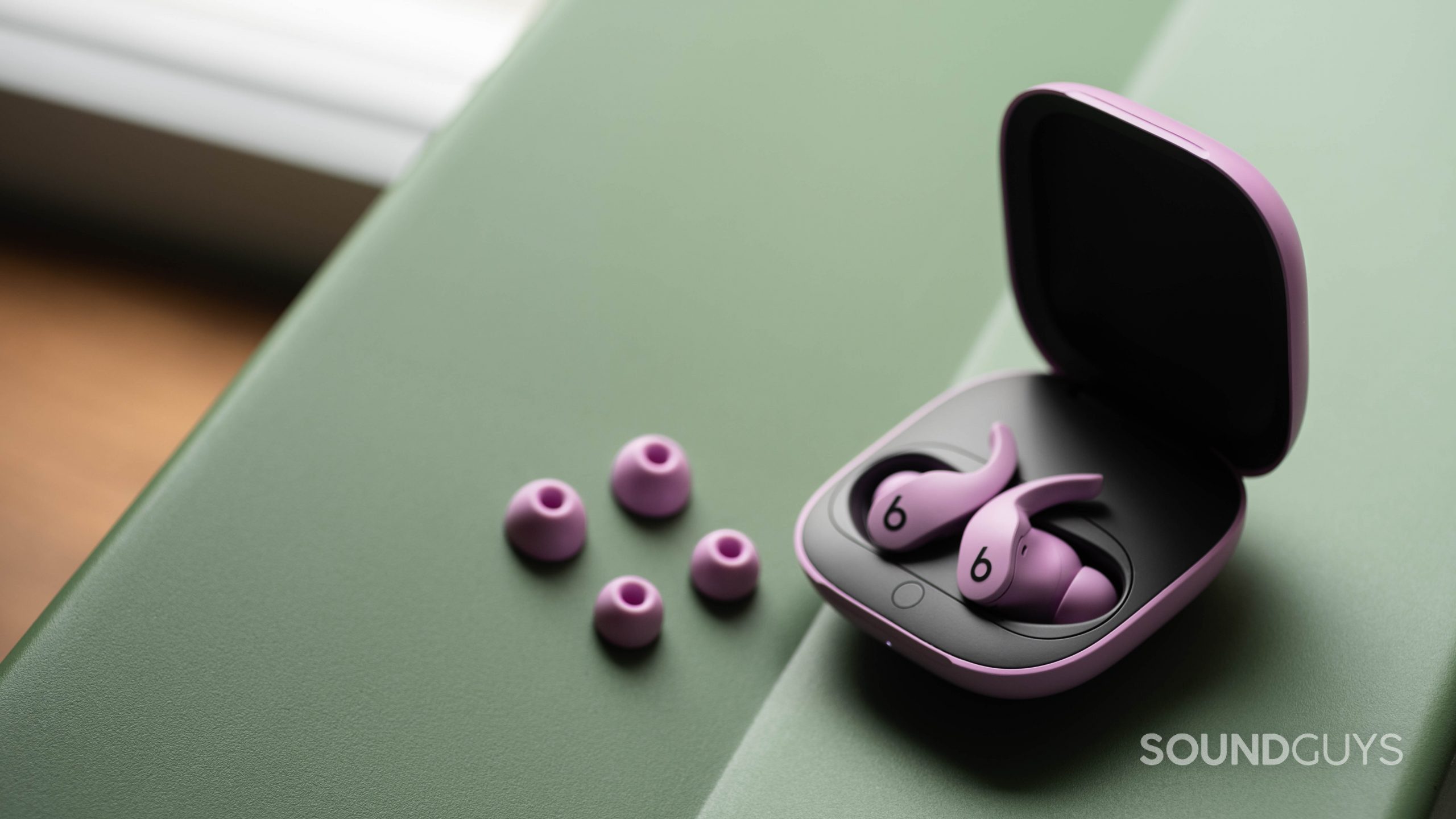
The Beats Fit Pro are great noise canceling earbuds for runners. Initially, we had a lot of trouble with the ANC, but Beats has fixed this, making these some of the best workout earbuds on the market.
With these, you’ll enjoy a solid pair of compact earbuds. The IPX4 rating is standard for workout earbuds, but the earbud shape is not. Beats integrates ear wings into the Fit Pro design, which keeps the buds stable during most movements. You get all the perks of an ear hook design without the bulk.
Loading chart ...
Like the Studio Buds Plus, the Fit Pro works with Android and iOS thanks to the Beats app for Android. You can customize the press-and-hold function and locate the buds on a map. Thankfully, Beats uses a USB-C input on the wireless charging case. Battery life is quite good, lasting 6 hours and 22 minutes in our testing.
Beats’ noise canceling is stellar, giving other flagship earbuds a real run for their money. Unlike many flagship headphones and earbuds, the Studio Buds cost less than $200. If you use Android and iOS devices daily, get these running headphones.

Can you use the AirPods Pro (2nd generation) for running?
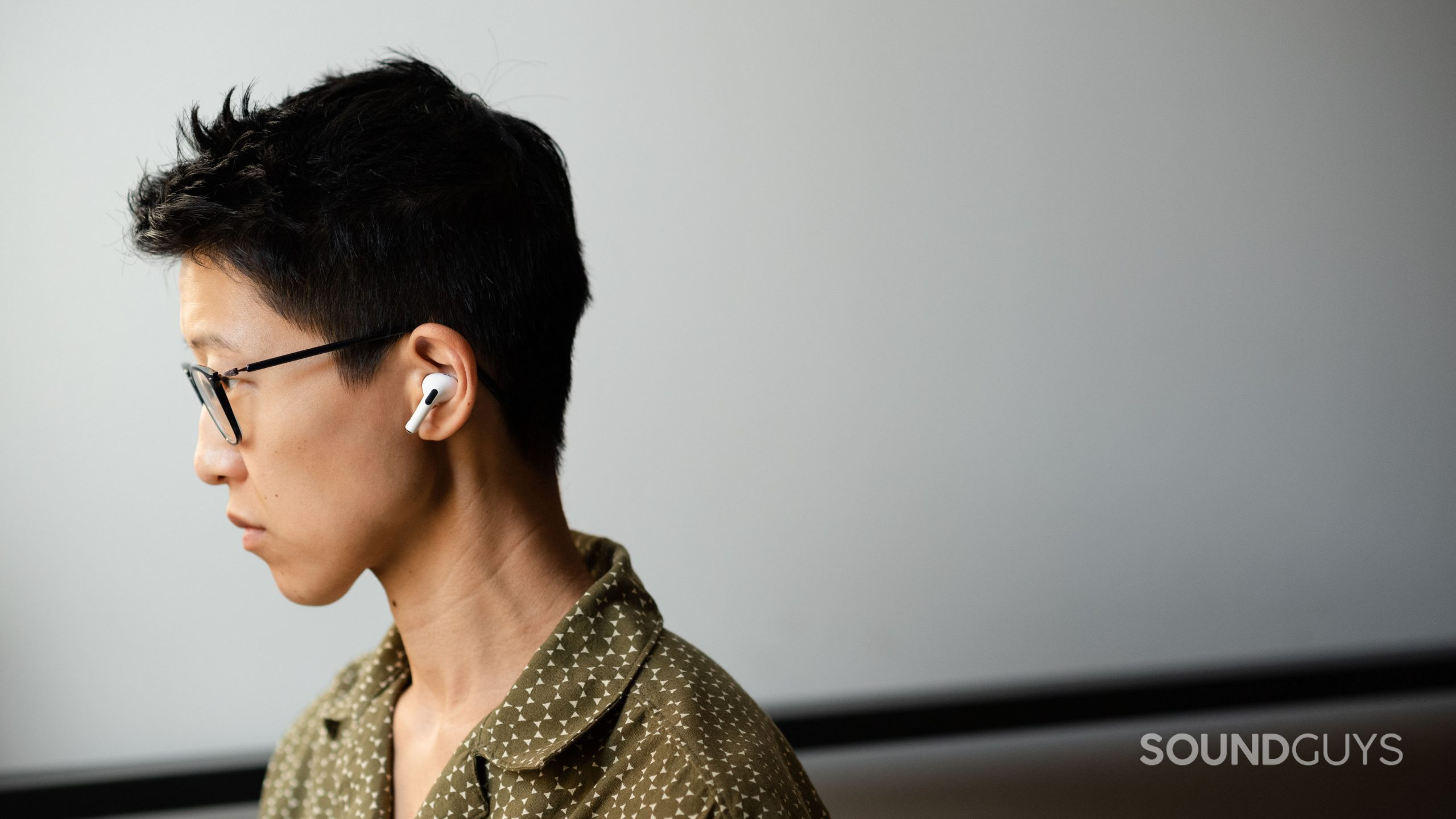
The Apple AirPods Pro (2nd generation) is a good option if you seldom run but still want a pair of earbuds that works with iPhones. The buds and case are IPX4-rated, and the earbuds securely fit thanks to the XS-L ear tips. Battery life isn’t nearly as good as the Powerbeats Pro, resulting from demanding ANC technology. But it supports Apple’s high-quality codec, AAC. Apple kept the H1 chip in the new AirPods Pro, so you can say “Hey Siri” and enjoy battery optimization.

The Beats Powerbeats Pro has an insanely long battery life
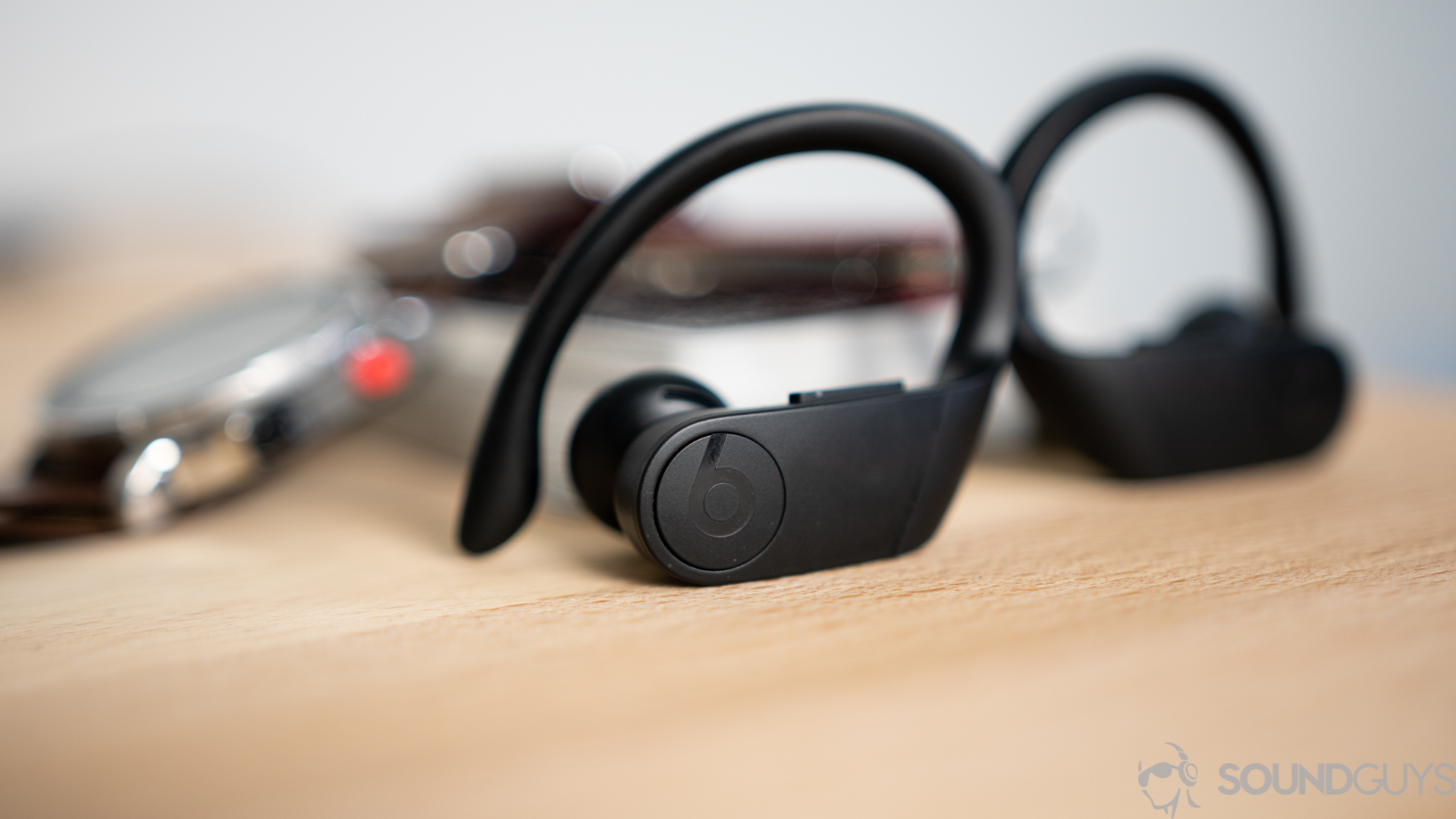
Beats gets a heck of a lot right with its debut true wireless earbuds. It is IPX4 sweat-resistant and features a sleek design. It uses the same H1 chip as the Apple AirPods, so you benefit from greater power efficiency (aka longer battery life) and voice-activated access to Siri. Along with this, it supports the AAC codec. It also makes pairing and auto-connecting to iPhones a breeze.
Many wireless earbuds suffer from terribly short battery life, but that’s not the case here. No, the Powerbeats Pro defies the rest with its 10-plus hour battery life. The charging case is pretty big and charges via Lightning cable, generally not favorable qualities. However, those are the two biggest drawbacks of the earbuds. Otherwise, the fit is excellent, the sound quality is superb for what the buds are, and the official IP rating assuages any potential durability concerns. We have no problem recommending it: it’s that good.

The best running earbuds and headphones: Notable mentions
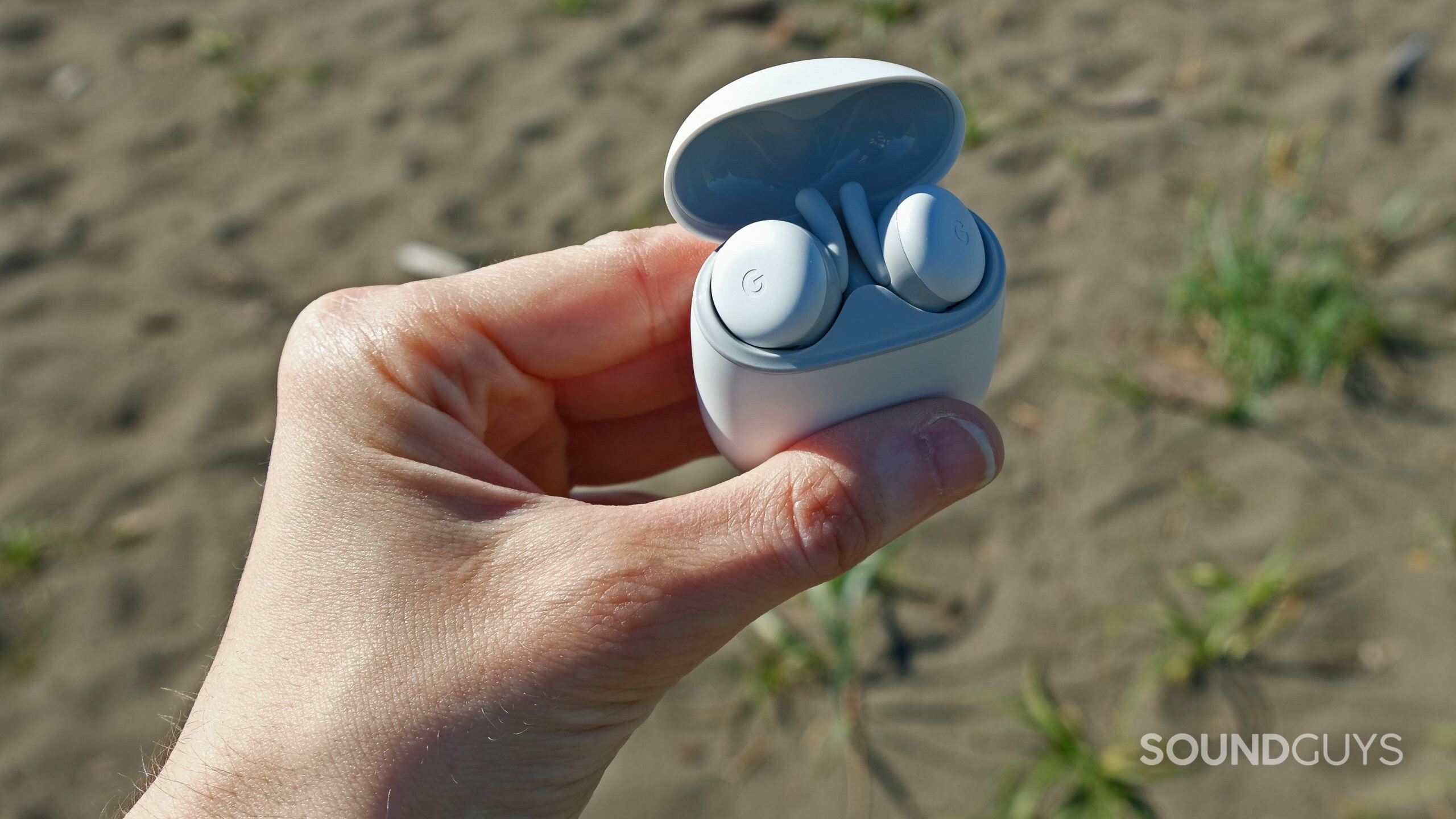
- Anker Soundcore Spirit Dot 2: These earbuds have an IPX7 rating and a very stable fit. They’re comfortable, affordable, and have excellent connectivity
- Bose QuietComfort Earbuds ($154.96 at Amazon): These earbuds have an IPX4 rating and wing tips which ensure a stable fit. They also have ANC to quiet the grunts of gym neighbors. Conversely, you can enable transparency mode to hear your surroundings outside.
- Google Pixel Buds A-Series ($94 at Amazon): Though the wing tips on these buds are one-size-fits-most, they are lightweight, have an IPX4 rating, and multiple sets of silicone ear tips. If you have an Android phone, this headset will integrate with your system really smoothly.
- Jaybird Vista 2 ($117 at Amazon): If you’re tough on your earbuds, get the Vista 2. With an MIL-STD-810G certification and IP68 rating, the earbuds can endure just about anything, and the case has an IP54 rating, which is rare among true wireless earbuds.
- JBL Endurance Peak 3 ($99 at Amazon): If you’ve been wondering what your next pair of workout earbuds should be and don’t want to shell out more than $100, these hooked buds should do the trick. You get an IP68 dust- and water-resistant build along with mobile app support for any phone.
- JLab Epic Air Sport ANC ($89 at Amazon): With surprisingly great noise canceling for less than $100 USD, these earbuds are a great option for just about anyone. The frequency response is a bit bass-heavy, but hey, that’s what you get when shopping for exercise earphones.
- Plantronics BackBeat FIT 6100 ($69 at Amazon): These over-ear headphones have an adjustable fit and IPX5 rating. It’s rare to see any kind of water resistance on headphones, so these affordable ones really stand out.
- Skullcandy Dime 2 True Wireless Earbuds ($24 at Amazon): These super-cheap earbuds support mono mode and come with Tile integration.
- Under Armour Project Rock Headphones by JBL ($298 at Amazon): These noise canceling headphones have an IPX4 rating and excellent battery life. You can remove and wash the ear pads, extending the life of the headset.
What you should know about the best running earbuds
Running earbuds are subjected to much more abuse than our beloved desktop setups, so you’ll need a pair of buds that can withstand a bit of roughhousing.
Well, if the title of this list weren’t enough of a giveaway, these earbuds are for runners. Whether you’re an ultramarathoner or a couch-to-5K runner, there’s a pick on here for you. But, if you aren’t a runner, stick around for a while. Our top five picks are versatile, and many use them for daily listening too. Plus, the water resistance and IP certifications make these earbuds impervious to splashes and spills.
If you want to remain completely aware of your surroundings without toggling through listening modes or dealing with specialized ear tips, bone conduction headphones may be more for you.
How should running earbuds sound?
Loading chart ...
Unlike studio headphones or even standard consumer earbuds, earbuds for runners will have a loud bass response relative to the mids. Boosted bass makes keeping pace with the beat easier and gives you something obvious to focus on. You’ll see that few running earbuds feature frequency responses that follow our ideal consumer curve perfectly, but that’s okay. If you like bass, skim through our charts in each review to find the headset with a bass-heavy sound. Alternatively, go for a headset that you can EQ either through a proprietary app or a third-party EQ app.
How do you know if your running earbuds fit?
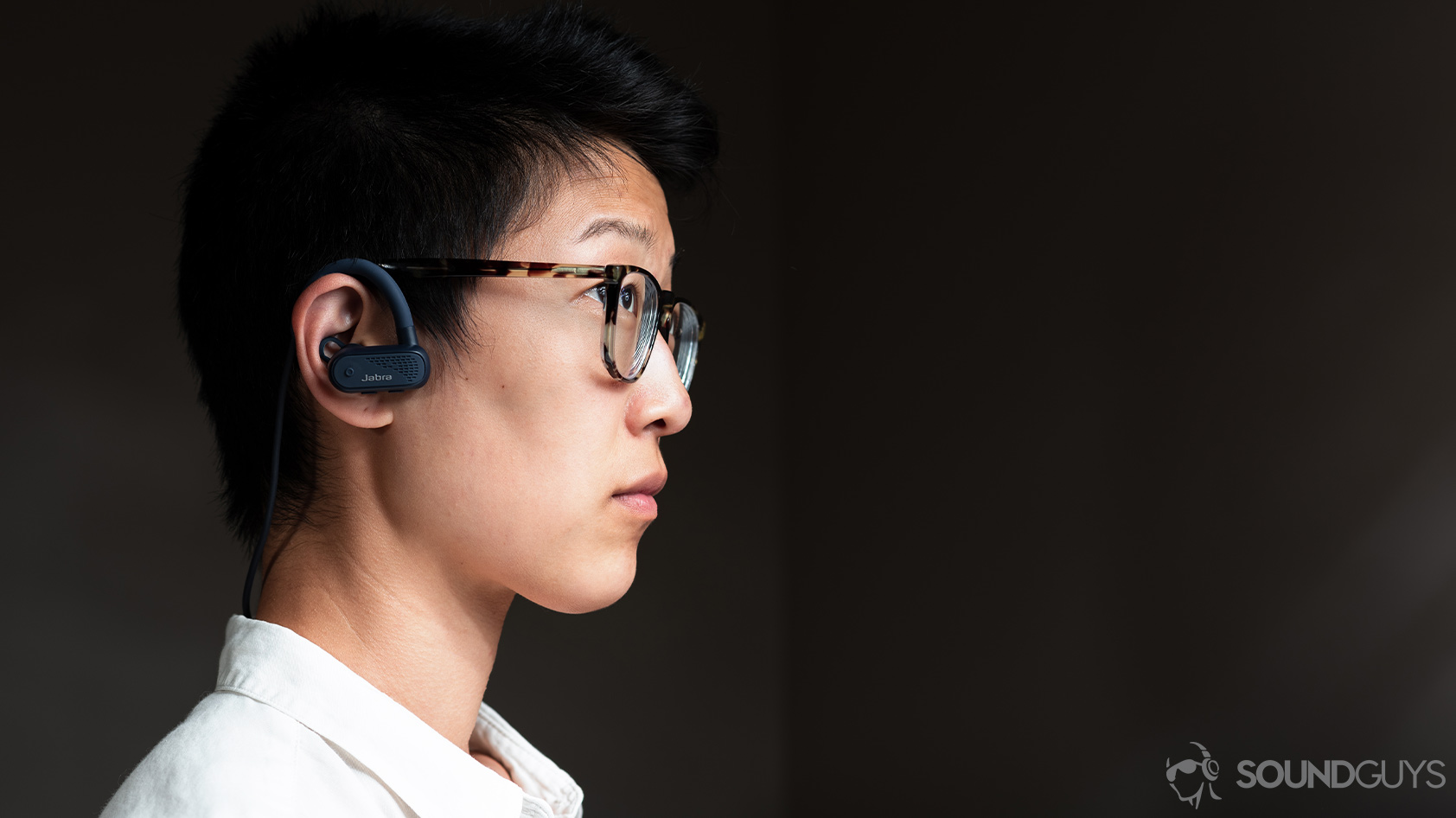
If you want the best sound quality and the most comfortable experience, a proper fit is crucial. You could have the best earbuds in the world, but if they don’t stay in your ears, they’re worthless. No ear is the same, and if the provided ear tips aren’t working, look into third-party options. Then again, if you’re running outside, be sure to get a pair of earbuds with safety features like Ambient Aware mode or specially designed ear tips that allow the ingress of external noise. While audio quality will be degraded, it’s worth it to remain aware of your surroundings.
What’s an IP rating?
IP ratings indicate how water-resistant a product is, and the “X” in something like IPX4 is just a placeholder for a dust protection rating. If you get something that’s IPX7-certified, it can withstand full submersion for up to 30 minutes. However, this doesn’t automatically make something a pair of swimming earbuds. In order to listen to music underwater, you’ll need a pair of earbuds with onboard storage.
True wireless connection strength is improving
While some true wireless earbuds struggle with connection stability, we’ve seen the technology improve leaps and bounds over the past few years. Many headsets use Qualcomm’s TrueWireless Stereo Plus or a proprietary connection method. Others use specialized chipsets to optimize connection stability, like Apple’s H1 chip.
How we test the best running earbuds
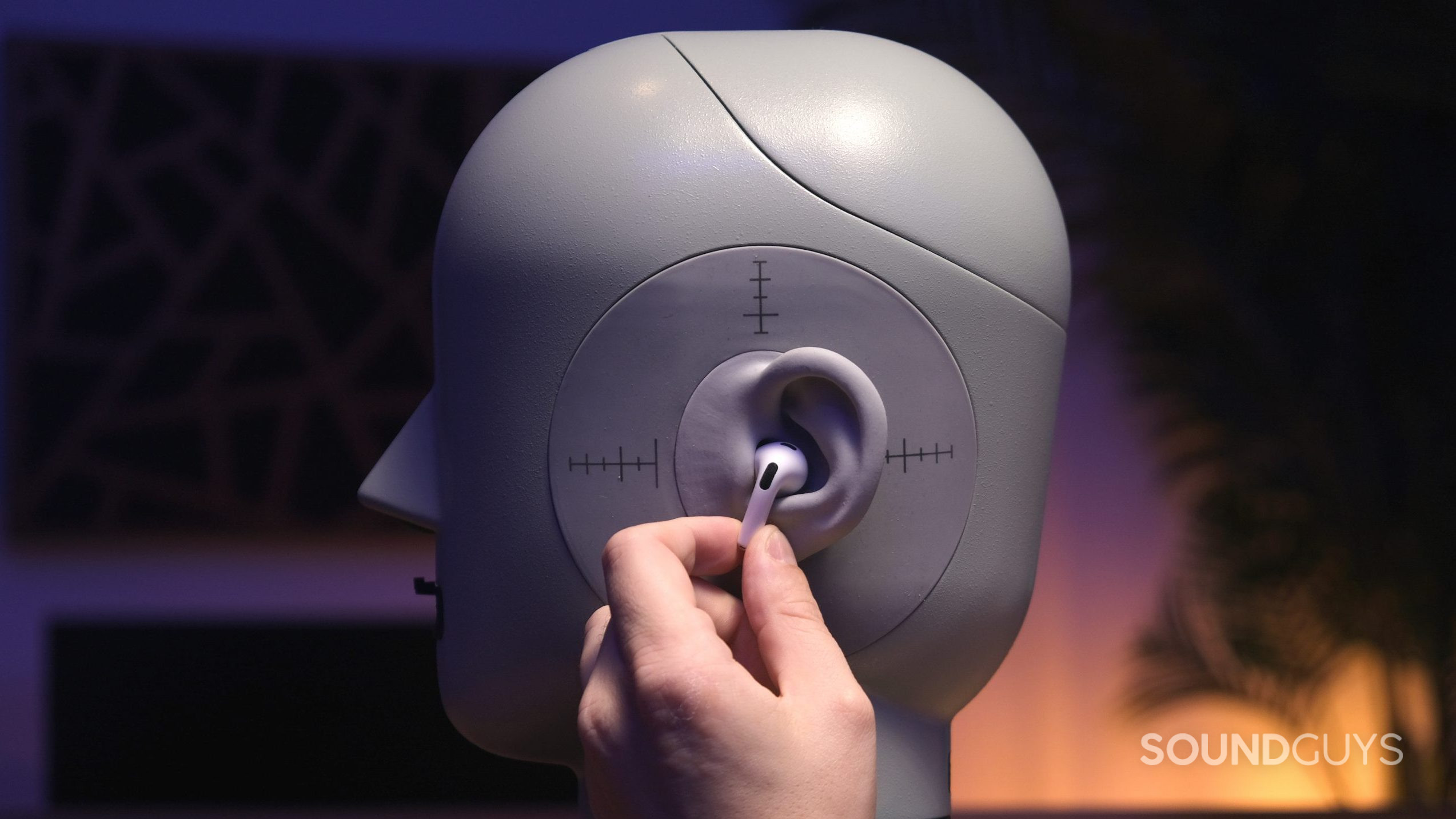
We test things like frequency response, isolation, and battery life using an artificial head and high-end audio analysis software. If you have the desire and time, you can read more about our testing methodology here. We endeavor to focus our reviews on the key areas of concern for wireless earbud users. Additionally, remember that battery life will fluctuate depending on the volume levels you’re listening at. And, as always, if you need to improve isolation, you should invest in third-party ear tips.
Of course, they were also used outside of a lab environment for actual running. I’ve logged miles upon miles in the name of headphone testing for SoundGuys, and each pair of running earbuds listed is durable enough to withstand my obscene perspiration habits. Well, that, and they’re all equipped with a sweat-resistant nano-coating or received an official IP rating.
Why you should trust SoundGuys
Each writer at SoundGuys has accumulated years of experience reporting on the consumer audio market, and our staff adheres to a strict ethics policy. We don’t use sponsored content on the website at a time when doing so is the norm. SoundGuys’ survival depends almost exclusively on readers enjoying their purchases. We pride ourselves on transparently outlining objective facts while accounting for the subjective experience to contextualize an audio product’s performance. When we do misspeak, we correct and own up to it.
Frequently asked questions about running earbuds
A good pair of running headphones should have an over-ear shape with ear pads that completely encompass your ears without any gaps. With a fit like this, there should be less opportunity for outside noise to make its way through the headphones. Most running headphones also have a greater clamping force than general-purpose headsets because you’re bopping up and down while you jog. This could be uncomfortable after an hour of wear, but most of us don’t exercise for longer than one or two hours anyway.
If you’re getting in-ear, a proper fit is especially important and requires the ear tips to create a solid seal with the entrances of your ear canal. Make sure the buds don’t shake out as you shake your head. A standard in-ear design is the most traditional fit and will likely cast the widest net in terms of preference when running. Why? Running earbuds are unobtrusive and increasingly more durable, particularly the wireless options. If the provided ear tips don’t fit well, take a few minutes to test out any alternatives.
For the budget-minded running enthusiast, take a look at the Creative Outlier One. At less than $30, it boasts a durable IPX4 water-resistant design, great battery life, and surprisingly good sound isolation for its price. If you’re looking to spend even less, the JBL Endurance Run is a good choice for under $20. It offers an even more water-resistant IPX5 rating, in-line remote controls, and a versatile design that ensures a proper fit during intense workouts.
How comfortable your earbuds feel depends on your specific ear shape as well as the ear tips you have. Ear hooks and wing tips provide stability, which factors into comfort because it prevents you from having to constantly adjust your earbuds during your workout.
We recommend the Bose SoundSport Free from this list if comfort is your main goal. They are stable with wing tips and won’t give you pain after wearing them for a long time. The only thing to note is that they are bulky, so if you have a lot of ear piercings, you’ll want to go with a sleeker set.
To keep your earbuds from falling out during your runs, here’s what the experts suggest:
- Ear Tips and Wings: Opt for earbuds like the Jabra Elite 8 Active or the Beats Fit Pro, which have designs that fit deep into the ear canal or integrate ear wings. These features ensure stability during movement, making them less likely to fall out.
- Bone Conduction Headphones: If traditional earbuds aren’t your thing, consider the Shokz OpenRun. They sit directly on your cheekbones, sending vibrations through your skull. This unique design means they don’t cover your ears at all, ensuring they stay put during your runs.
- Hooked Design: Earbuds like the Beats Powerbeats Pro come with hooks that wrap around the back of your ear, providing an extra layer of security.
- Customizable Ear Tips: Some earbuds, like the Apple AirPods Pro (2nd generation), come with multiple sets of silicone ear tips. This allows you to choose the size that fits your ear best, ensuring a snug fit.
- Awareness Mode: If you’re concerned about safety, earbuds like the Jabra Elite 8 Active allow you to adjust how much environmental noise can permeate the earbuds. This means you can be aware of your surroundings without compromising the fit.
Remember, no ear is the same. It’s essential to find earbuds that cater to your unique ear shape and running style. Whether you’re sprinting or enjoying a leisurely jog, the right earbuds can make all the difference. So, lace up, tune in, and enjoy your run!